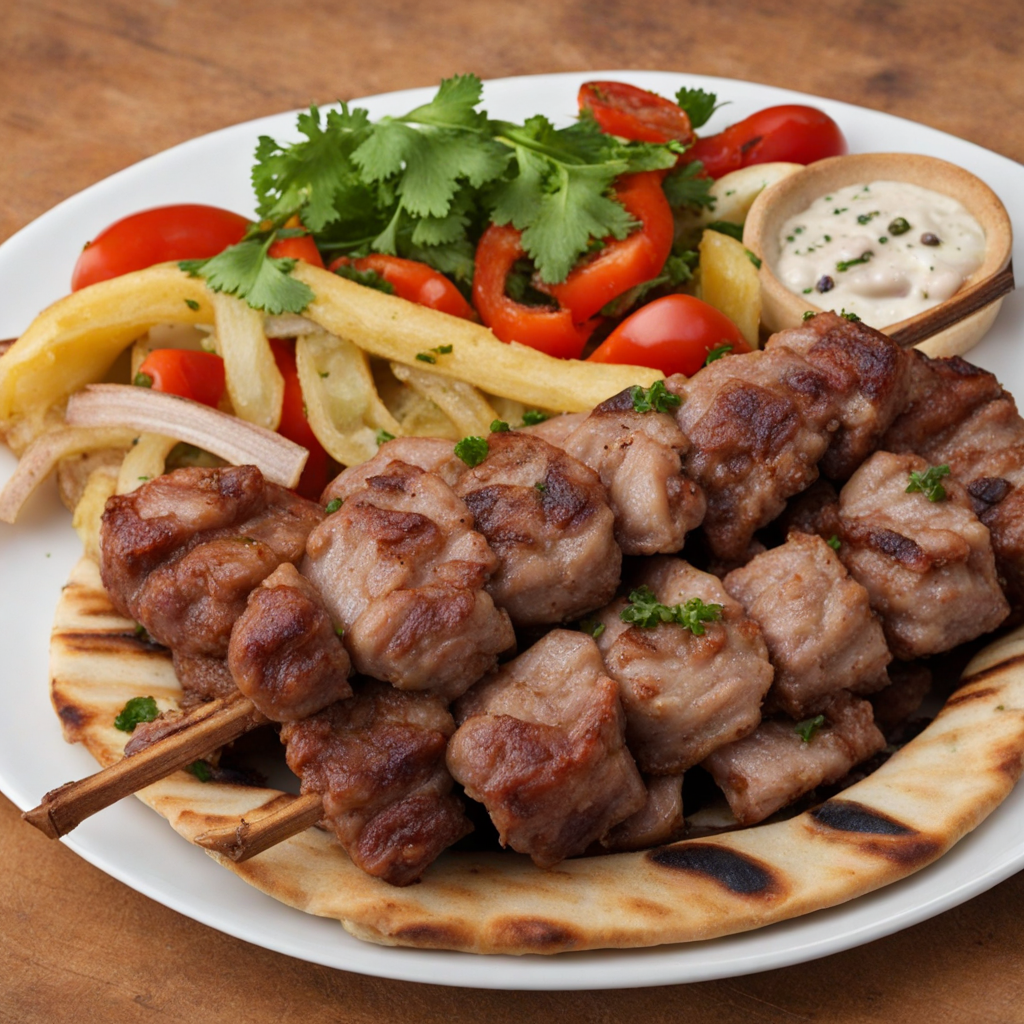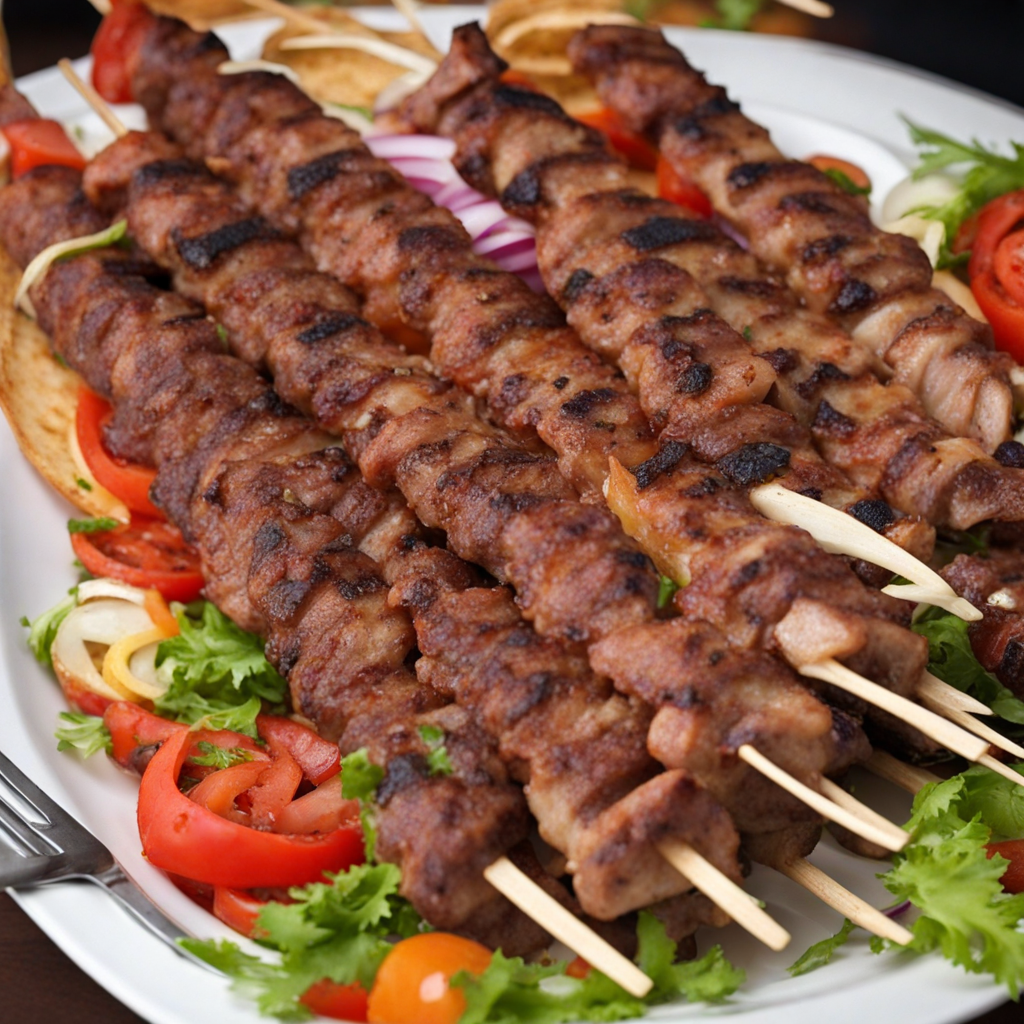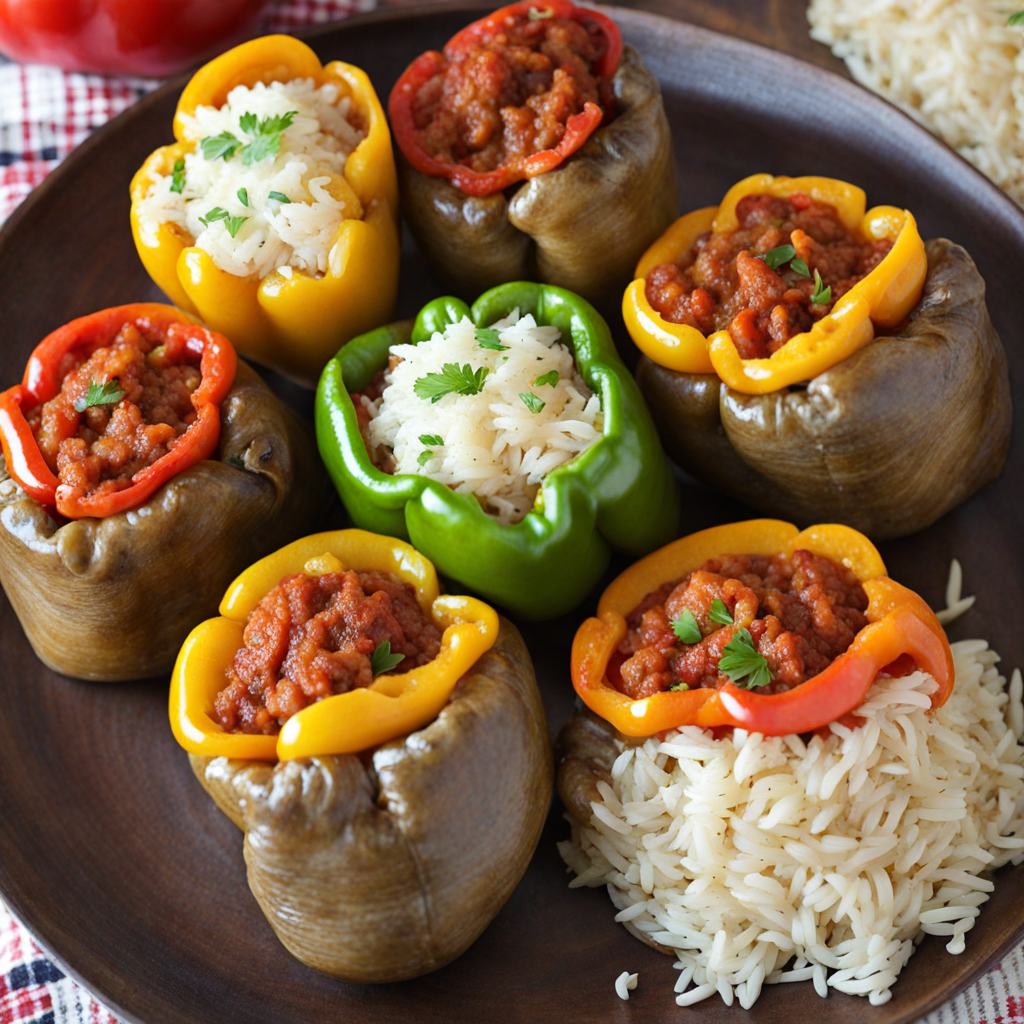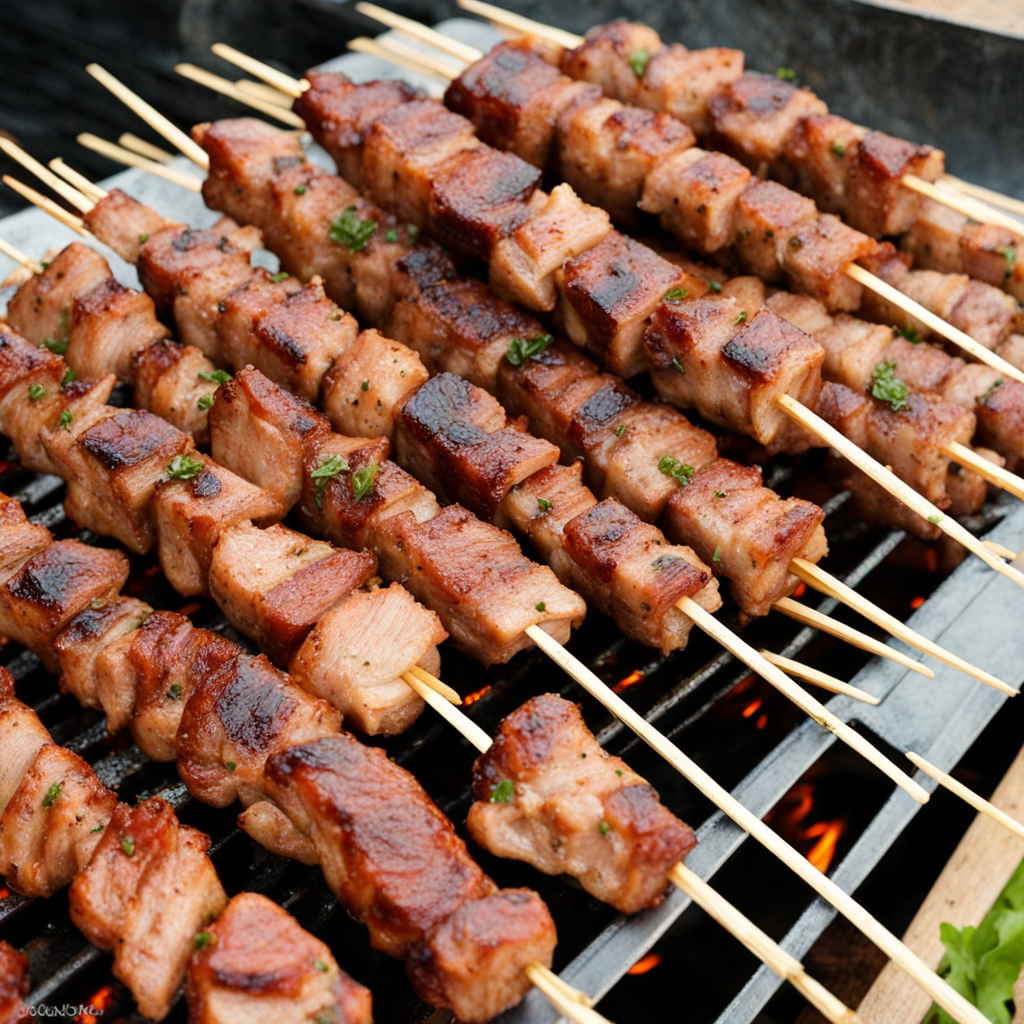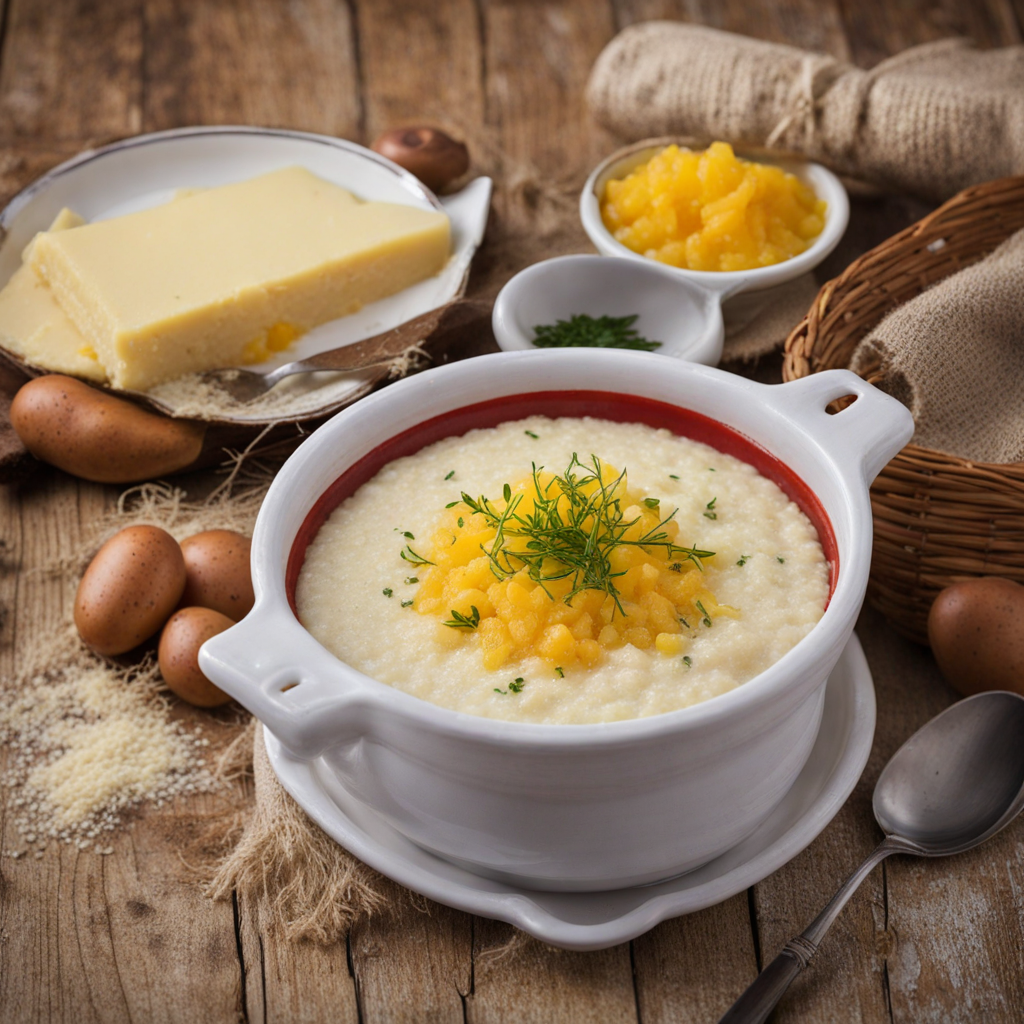Kebab
Kebab from Kosovo is a tantalizing dish that showcases the rich culinary traditions of the region. This flavorful delight typically consists of skewered and grilled marinated meat, traditionally lamb or beef, which is seasoned with a blend of spices that may include paprika, garlic, and black pepper. The marinade infuses the meat with a depth of flavor that is both savory and aromatic, creating a mouthwatering experience that highlights the quality of the ingredients used. The kebabs are often served with a side of fresh vegetables, yogurt sauce, and sometimes even a tangy salad, providing a refreshing contrast to the warm, juicy meat. In Kosovo, kebabs are not just a meal; they are a social experience often enjoyed in gatherings or celebrations. The grilling process adds a smoky char that enhances the overall taste, and the aroma wafting from the barbecue is enough to make anyone's mouth water. The kebabs are typically served with traditional bread, known as somun, which is perfect for wrapping around the meat or soaking up the delicious juices. This combination of flavors and textures makes Kosovo's kebabs a must-try for anyone seeking to explore new gastronomic horizons. Moreover, kebabs in Kosovo can be customized to suit individual tastes, with options for spicy or mild seasonings. Accompanied by vibrant sides like pickled vegetables or creamy dips, each bite is a delightful journey through the culinary heritage of the region. Whether enjoyed at a local eatery or made at home, Kosovo's kebabs offer a unique taste that reflects the warmth and hospitality of its people, making it a dish that is not only satisfying but also brings people together around the table.
How It Became This Dish
The History of Kebab in Kosovo: A Culinary Journey #### Origins of Kebab Kebab, a dish that has transcended borders and evolved through time, has its roots deeply embedded in the culinary traditions of the Middle East and the Mediterranean. The term "kebab" itself is derived from the Arabic word "kabāb," which means "to fry" or "to grill." While the exact origins of kebab are debated among food historians, it is widely accepted that this beloved dish emerged from the nomadic tribes of Central Asia, who would skewer pieces of meat on sticks and roast them over open fires. This practice spread as these tribes migrated westward, influencing the cuisines of Persia, the Ottoman Empire, and eventually the Balkans, including Kosovo. In Kosovo, kebab has become an integral part of the culinary landscape, reflecting the region's rich history of cultural exchanges and conquests. The Ottoman Empire, which ruled over the Balkans for several centuries, played a pivotal role in shaping the local food culture. As Ottoman culinary traditions permeated the region, kebab diversified into various forms, each reflecting local ingredients and cooking methods. #### Cultural Significance In Kosovo, kebab holds a special place not just as a dish but as a symbol of hospitality and community. It is often served during feasts, family gatherings, and celebrations, signifying warmth and togetherness. The preparation and sharing of kebab can be seen as an act of bonding, where family and friends come together to enjoy a meal that has been prepared with care and love. Kebab is also a representation of Kosovo's multicultural heritage. The country is home to a diverse population, including Albanians, Serbs, Bosniaks, and others, each contributing to the culinary tapestry of the region. The kebab, in its various forms, has become a unifying dish that transcends ethnic boundaries, allowing people from different backgrounds to share a common culinary experience. Moreover, kebabs are often associated with the street food culture in Kosovo. Vendors selling grilled meats can be found in bustling markets and along the streets, drawing locals and tourists alike. The aroma of sizzling meat, combined with the vibrant atmosphere of these street-side eateries, creates a sensory experience that is both inviting and exhilarating. #### Development Over Time The evolution of kebab in Kosovo can be traced through several key phases, each influenced by historical events, cultural exchanges, and changing tastes. 1. Ottoman Influence (14th - 20th Century): The arrival of the Ottomans in the 14th century marked a significant turning point in Kosovo's culinary history. The empire's influence introduced a variety of cooking techniques, spices, and ingredients. This period saw the emergence of the skewered meat variety known as "şiş kebab," which is still popular today. Made typically from lamb or beef, these kebabs are seasoned with a blend of local herbs and grilled to perfection. The Ottoman legacy is evident in the way kebab is prepared and consumed, often accompanied by fresh bread, salads, and various dips. 2. Post-Ottoman Era (20th Century): The collapse of the Ottoman Empire in the early 20th century brought significant political and social changes to Kosovo. However, kebab remained a staple in the local diet. During this period, the dish began to incorporate influences from neighboring cuisines, such as Serbian and Mediterranean flavors. New variations emerged, including "manti," a type of dumpling that is sometimes filled with spiced meat and served with yogurt or tomato sauce, reflecting the blending of culinary traditions. 3. War and Resilience (1990s): The turbulent 1990s, marked by conflict and instability, had a profound impact on the people of Kosovo and their culinary practices. Despite the hardships, food remained a source of comfort and resilience for many. Kebabs continued to be a favored dish, often prepared in homes and shared among families and friends as a way to maintain a sense of normalcy and community. During this time, the kebab became not just a meal but a symbol of survival and endurance. 4. Modern Revival and Globalization (21st Century): In the 21st century, Kosovo has experienced a resurgence of interest in its culinary heritage, with kebab at the forefront of this revival. The globalization of food culture has introduced new techniques and flavors, leading to innovative interpretations of traditional recipes. Chefs and home cooks alike experiment with different meats, marinades, and cooking methods, showcasing the versatility of kebab. The rise of food tourism has also contributed to the kebab's popularity, with many visitors seeking authentic culinary experiences. Street food festivals and culinary events highlight kebab, allowing local vendors to showcase their skills and connect with a broader audience. #### Kebab Variants in Kosovo Kosovo boasts a variety of kebab styles, each with its unique twist. Some of the most popular variants include: - Qebapa: Often considered the national dish of Kosovo, qebapa are small, minced meat sausages typically made from a mix of beef and lamb. They are heavily seasoned with garlic and spices, grilled over charcoal, and served with fresh bread, onions, and sometimes yogurt. - Sish Kebab: Skewered pieces of marinated meat, usually lamb or chicken, grilled to perfection. The marinade often includes olive oil, lemon, and various spices, creating a tender and flavorful dish. - Tavë Kosi: While not a kebab in the traditional sense, this baked dish made with lamb, rice, and yogurt is often served alongside kebabs in many meals, showcasing the fusion of flavors in Kosovo's cuisine. - Kebabs with Local Twist: Many local eateries have begun to experiment with fusion kebabs, incorporating ingredients like ajvar (a pepper-based condiment) or unique marinades that reflect the local agricultural bounty. #### Conclusion Kebab in Kosovo is more than just a dish; it is a testament to the region's rich history, cultural diversity, and resilience. From its ancient origins to its modern interpretations, kebab has endured as a beloved culinary staple, embodying the spirit of community and hospitality. As Kosovo continues to navigate its path in the global culinary landscape, kebab remains a cherished symbol of identity, tradition, and the unifying power of food. Whether enjoyed at a bustling street stall or served at a family gathering, kebab is a dish that connects generations and celebrates the vibrant tapestry of Kosovo's heritage.
You may like
Discover local flavors from Kosovo


